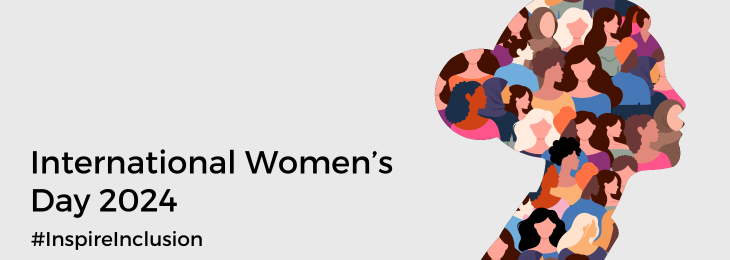
Fintech is the integration of financial services and technology that has emerged in the 21st century as a new sector in financial services. It includes a broad spectrum of innovative companies that are generally startups founded with the purpose of disrupting traditional financial products and services. In the last several years, mobile payments, money transfers, loans, fundraising and even asset management sectors have contributed to the growth of Fintech. Companies such as PayPal, Kabbage, Lending Club, Square, Venmo and GoFundMe are recognizable brands that have fast become mainstream.
Citigroup reports that investment in Fintech has increased from $1.8 billion in 2010 to $19 billion in 2015.1 Fueled by the rise of a mobile, on-demand economy and widespread public frustration with the banking industry, acceptance of these alternative services continues to grow, as evidenced by the impact that digital disruption is having on the financial industry. A recent article in the Wall Street Journal indicates that there are now more than 4,000 Fintech companies in the U.S. and U.K. alone.2
The Battle Between Old and New
Legacy technology, slow deployment cycles for new technology and the inability to attract top technological talent are some of the challenges that banks face today if they wish to compete in the digital future. Regulatory and cost-reduction constraints are other factors that may cause these incumbents to lose out to new players who can deliver financial products and services more rapidly and efficiently. However, banks still have the advantage of an established customer base, capital and knowledge of compliance and regulatory requirements. When assessing the Fintech landscape, banks must have a clear digital strategy when deciding to compete, collaborate or buy.
Technology pundits have given banks three to five years to become digitally proficient or risk becoming a digital laggard with declining profits. To succeed competitively, banks must invest in upgrading web and mobile technologies and adopt a Fintech culture that includes opening up application program interfaces, using agile development and even hosting hackathons to encourage collaboration.
A report published by the Economist Intelligence Unit titled “The Disruption of Banking,” indicates “there is a strong correlation between the strengths of banks and the weaknesses of Fintech, and, conversely the strengths of Fintech and the weaknesses of banks.”3 This correlation—combined with a common goal to deliver a seamless customer experience—has prompted partnerships that keep Fintech companies agile and innovative and banks competitive in building excellence in technology and customer experience. One such example is the investment that Santander, Scotiabank and ING have made in Kabbage, an automated lending platform for small businesses. Kabbage offers loans in partnership with these organizations at a lower rate while reducing each bank’s back-office costs and making loan processing more efficient.
Whether the strategy is to go for it on their own or through a Fintech partnership or acquisition, digital innovation will allow banks to create value in several ways:
- Greater connectivity with customers, employees and suppliers
- Better decision-making due to improved data analytics
- More efficient automation and workflow with straight-through processing
- Ongoing product and business innovation
The Changing Compliance Landscape
Banks and regulators have limited experience managing new technologies, especially those that serve the unbanked
Consumers want easy access to save, spend and borrow money and will seek providers who best meet their needs. According to Javelin Strategy & Research, 126 million Americans will use mobile peer-to-peer payment apps by 2020, which represents a 50 percent increase from today.4 However, Fintech’s disruption of the financial sector comes with new risks. Banks and regulators have limited experience managing new technologies, especially those that serve the unbanked. Regulators must balance the need for new technology that provides better services while controlling new operational risks brought about by the aggressive growth of unregulated financial services.
The regulatory uncertainty of non-bank financial services has caused gaps in consumer protection. Data security and transparency issues have been problematic for some popular peer-to-peer payment companies in the recent past. While nonbanks may be subject to the same consumer protection laws as banks, they do not have the supervisory relationship with regulators.
U.K. Regulators Step Up
Recognizing the need for regulatory involvement in this new sector, the U.K. has been quick to action and leads the U.S. in this endeavor. In October 2014, the Financial Conduct Authority (FCA) initiated Project Innovate to promote competition in innovation to benefit consumers. A bank startup unit was created in January 2016 to help nonbanks determine if they should become banks and to educate these firms on regulatory requirements that they may be subject to under a bank charter. As part of Project Innovate, the FCA opened a regulatory sandbox in May 2016 where Fintech companies could test innovative products, services, business models and delivery mechanisms in a live environment while ensuring that consumers are appropriately protected.
The FCA was the first regulator to launch such a program. “In many ways it won’t be just the firms that are learning in the sandbox. We will be, too,” said Christopher Woolard, FCA director of strategy and competition, in his April 11, 2016 speech to the Innovate Finance Global Summit. Considered a unique but promising approach to managing new risks, regulators across the globe are closely monitoring the outcome of this experiment. The metrics are beginning to show that the U.K. government’s proactive approach has created a very strong Fintech ecosystem generating 6.6 billion pounds in revenue in 2015 and employing 61,000 people. This has encouraged regulators around the world to explore this approach with some moving forward to adopt similar sandbox initiatives.
The U.S. Takes Action
On October 26, 2016, the Office of the Controller of the Currency (OCC) announced its decision to establish an Office of Innovation and implement a framework supporting responsible innovation. The framework includes the creation of chief innovation officers (CINOs) in New York, San Francisco and Washington, D.C., to facilitate communications between the OCC and Fintech firms. The framework also promotes increased hiring of technical talent and has the potential to create a pilot program for testing new solutions and enhancing risk management before a committed roll out. Pilot programs would only be available to OCC-supervised banks and their Fintech partners with the stipulation that they must comply with all relevant consumer protection requirements.
In December 2016, the OCC went one step further when they announced that they would begin to grant limited purpose bank charters to Fintech companies. The OCC’s authority to grant charters for national banks and federal savings associations also includes special purpose national banks. Limited purpose bank charters are granted to trust banks and credit card banks and will now extend to Fintech companies engaged in bank-permissible, technology-based innovations in financial services. While Fintech companies—ranging from online lenders to virtual currency and payments companies—applaud this move, consumer advocates and state regulators cite concerns that the OCC will not follow through on its pledges to hold Fintech companies to the same standards of safety, soundness and fairness as other federally chartered institutions.
Capital requirements, state interest rate caps for lenders and community reinvestment requirements are some of the issues raised if the OCC opens up the federal banking system to Fintech companies. But, even before the announcement and despite the potential for more detailed federal scrutiny of business models, board structures and capital levels, some Fintech firms were seeking a national charter citing benefits of reducing costs and increasing their ability to conduct business.
Regulatory risk is a major concern for companies developing innovative financial products and for those partnering with Fintech startups. While the U.K. and U.S. have taken different approaches to integrate Fintech firms into the compliance landscape, the common challenge is finding the right balance in regulatory oversight that allows Fintech firms to pursue innovation with confidence and certainty. Fintech companies are here to stay. The healthy cooperation of banks, regulators and Fintech firms will ensure better industry economics and customer experience while mitigating the risks introduced by new products.
- Citi GPS: Global Perspectives and Solutions, “Digital Disruption: How Fintech is Forcing Banking to a Tipping Point,” March 2016, https://www.citivelocity.com/citigps/ReportSeries.action?recordId=51
- Rachel Witkowski, Telis Demos and Peter Rudegeair, “Traditional Banks Facing New Rivals,” The Wall Street Journal, December 4, 2016.
- Economist Intelligence Unit, “The Disruption of Banking,” October 20, 2015, https://www.eiuperspectives.economist.com/technology-innovation/disruption-banking
- John Engen, “Try to Catch Venmo in Person-to-Person Payments,” The American Banker, January 9, 2017, https://www.americanbanker.com/news/try-to-catch-venmo-in-person-to-person-payments










